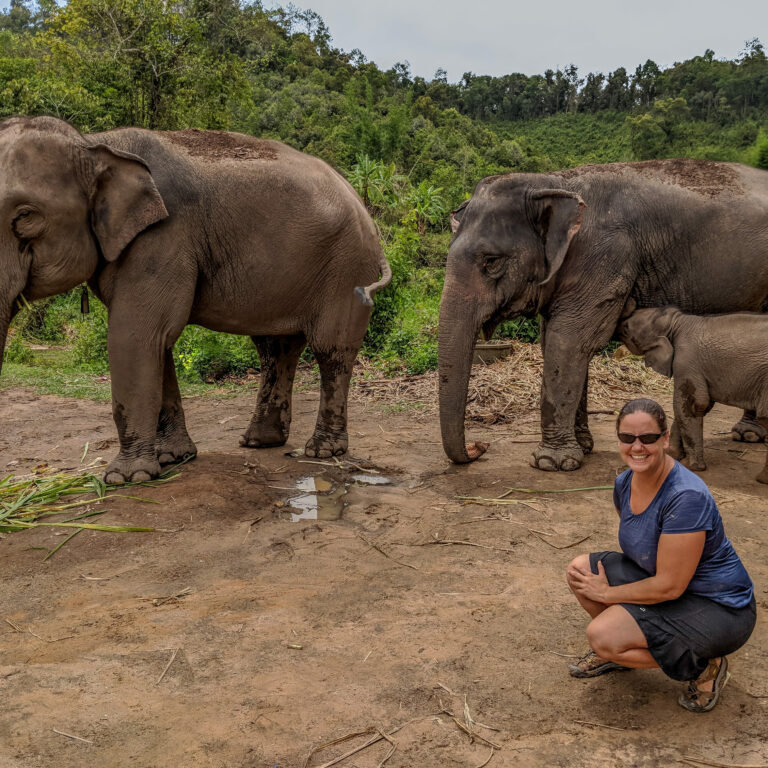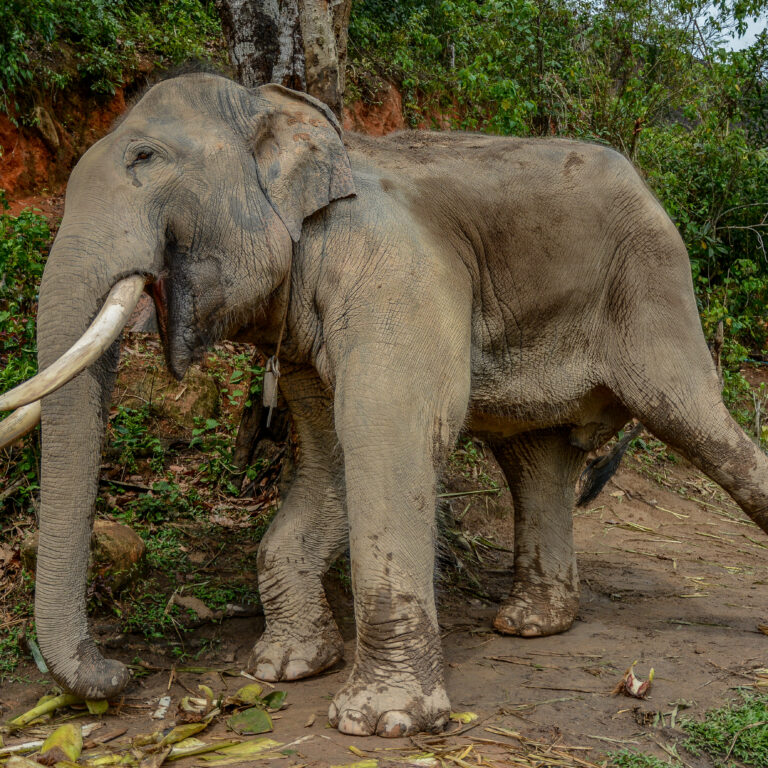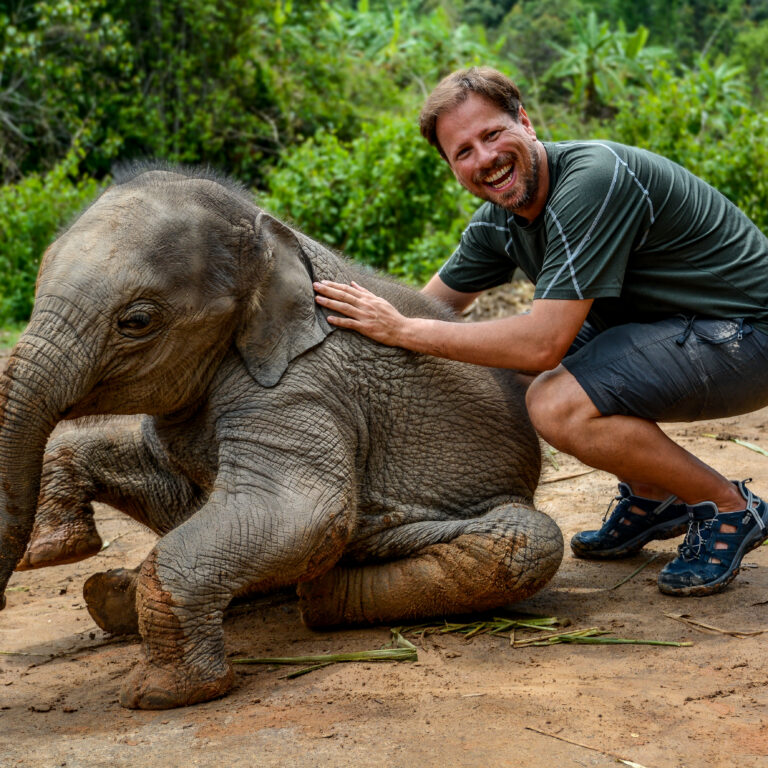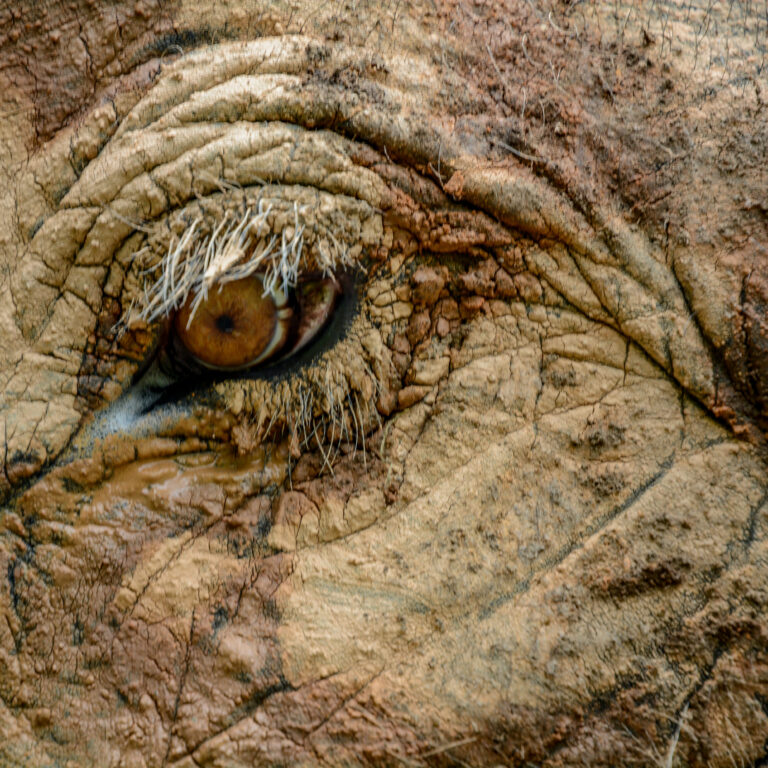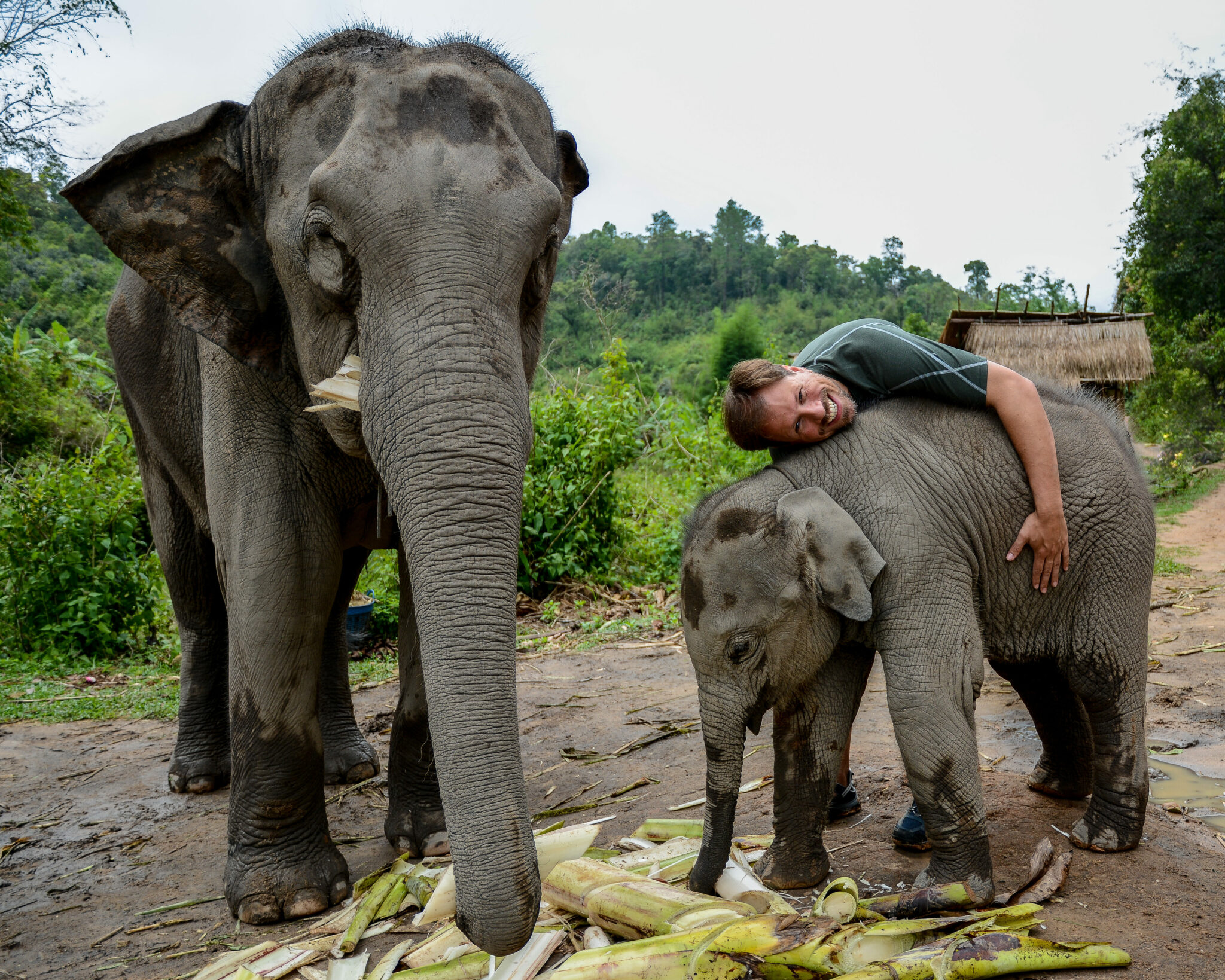
One activity in Southeast Asia that’s probably on a lot of people’s bucket list is spending time with elephants. There are so many different ways to experience them and many are highly controversial. Chiang Mai is one of the hotspots to interact with elephants, and after extensive research, we decided to see these magnificent animals at Karen Tribe Native Elephants, which is a couple of hours west of Chiang Mai.
The difference with the elephants at Karen Tribe is that they belong to the people of the village. In the past, elephants were used to help with farming and logging. But over time as they no longer required elephants for such labor, they weren’t able to afford to keep them, so many were sold and ended up in tourist camps where they were often mistreated. Eventually, the village decided that they could also use the elephants for tourism but treat the animals with the respect they deserve. Unlike other elephant sanctuaries, only a limited number of people can visit the elephants each day, and the little money they make goes towards caring for the elephants. On the day we went, there were only four other people.
After a long and windy drive through the mountains (take motion sickness pills if you don’t want to get sick like Therese did), we were greeted by the elephants. Without being rushed, we were able to meet all of the elephants and feed them bananas and sugar cane. Then we paired off with the elephant that we would spend the rest of the day with. Our elephant was Bujan (spelling?) – a handsome male elephant with beautiful tusks. The rest of the itinerary included a health check, bath, short trek to exercise them (optionally riding bareback, which we were assured is not bad for their health as long as it is done properly), and then after a tasty lunch, we finished the day making medicine balls for the elephants.
It’s clear why the Karen Tribe has been called “The Caretakers of the Elephants” for hundreds of years. They truly treat the elephants as family members! The elephants seemed happy and the trainers were well educated. It’s obvious that elephant health, both physical and mental, is their top priority.
Seven elephants are cared for in the village. The baby, David, was only a few weeks old but was full of energy! He was very playful, but weighing around 500 pounds, it was easy to see how strong these animals are.
We were taught signs to look for to determine how healthy they are, such as making sure the ears flap back and forth regularly, looking for sweat near their cuticles, looking for a trail of tears on both eyes since elephants do not have tear ducts, ensuring that they’re constantly eating, looking for dust on both sides of the body to show that they’re well-rested (elephants sleep on each side for about an hour), and looking at its fecal matter. Dung has a lot of moisture, but after ringing the water out, healthy bowel movements have no scent. The dung is also threadlike from all the grass they eat – some greeting cards are even made out of elephant dung! Fun fact, healthy elephants can live up to 135 years.
We were also taught how to properly introduce ourselves to the elephant that we would spend the day with, and we learned some spoken commands. We fed them by saying “Bon”. When hearing the command, they raise their trunk and open their mouth to get the food. After eating, we would then say “dee dee”, which is similar to saying “good boy”, and pat them on their head.
We highly recommend spending a day with elephants at Karen Tribe Native Elephants!
Gallery
Details
Date Visited:
Tour Company: Karen Tribe Native Elephants



